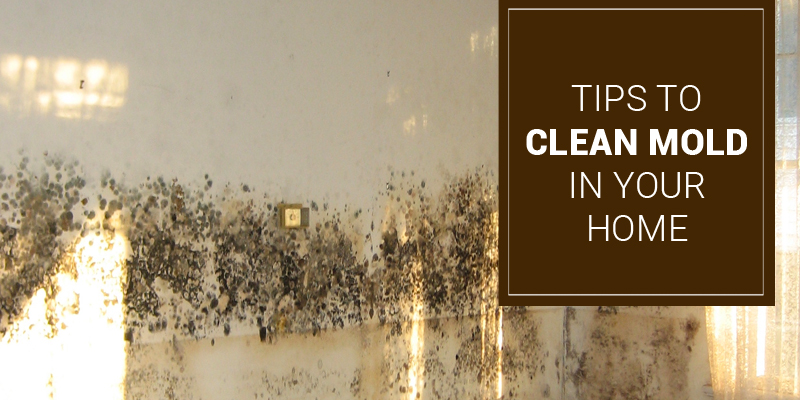
All About Mold – What is Mold, How to Detect Mold and Tips to Clean Mold in Your Home
Mold infests almost every home, both indoor and outdoor. Many a times you must have swabbed down those blackened grout lines in your shower, cleaned the dark and damp decks, painted the discolored drywall. These are the few but sure signs of mold. Instead of waiting for mold to grow into large colonies and create health trouble, it is better to detect mold and get rid of it right in the beginning. Let’s explore more about this nasty thing home.
What is Mold?
Mold is a kind of fungus that requires moist environment to grow and reproduce. Microscopic spores released by mold can cause many allergies including running nose, skin irritation etc.
How to detect Mold?
Mold gives off a musty or smelly odor. But there are some visible signs as well such as a fuzzy appearance and presence of green, black, brown or white patches at the place of mold growth.
Mold begins with a tiny black spot called mildew which grows into large colonies, if neglected. To test if it is mildew or dirt, simply put few drops of household bleach on the area to be tested. If it lightens after a minute or two then it is mildew otherwise it is nothing more than a dirt.
The most Vulnerable Areas for Mold Growth
- Basement is the most prone area for mold growth as it does not get natural Sunlight and proper ventilation. Moisture and humidity further make basement vulnerable to mold growth in your home.
- Utility Room – There is a regular flow of water in utility room and around cloth dryer. Any undetected leakage may result in mold growth. Make sure that duct is vented towards outside and the area is well ventilated.
- Under sink, closets
- Windows – Windows at your home can accumulate moisture if your home is not insulated properly. Hence, check all your window frames, and pane for mold.
- Shower curtain
- Recently damaged water pipes or leakage.
- Check all air ducts and vents
Health Risk
Presence of mold can affect your health and you may suffer from skin or respiratory problem or both.
Mold Cleanup
If the patch is small (less than roughly 3ft by 3ft patch) then you can treat it on your own but if the mold size is big, hire a contractor or a professional service provider.
- Fix all the leakages at home as soon as possible. Keep the area completely dry.
- Incase of visible mold growth on hard surface scrub off the area using detergent and water. Once done, dry it completely.
- Throw away the moldy carpet, if possible as it may damage the tiles or floor.
- Clean the modly surfaces before painting.
- Keep the bathroom clean and well ventilated by opening a window or running a fan.
EPA Resource on Mold Growth and its Control
Mold Remediation in Schools and Commercial Buildings Guide
Frequently Asked Questions About Mold
Photo Credit: Infrogmation


